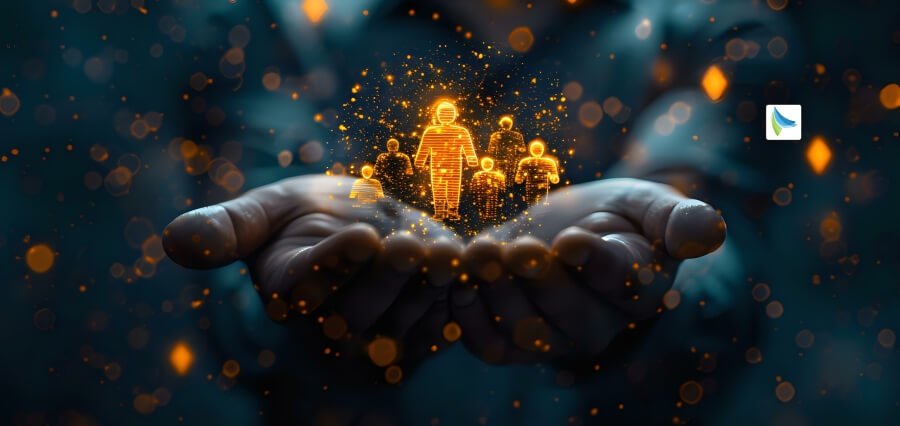In response to the increasing global awareness of environmental impact, paint manufacturers are adopting sustainable practices. Throughout the entire production process, from the sourcing of raw materials to the final product, the industry is actively engaged in efforts to minimize its ecological footprint. This commitment underscores a collective dedication to environmentally responsible practices within the paint manufacturing sector.
Hempel A/S is a renowned company that is committed to sustainability in its innovative products and initiatives; with a broad portfolio of products that contribute to the protection and longevity of assets, the company’s dedication to innovation positions it as a significant player in the global market.
Hempel holds a unique position in the industry with a rich history dating back to its founding in 1915. Operating in the Marine, Energy, Infrastructure, and Decorative segments, the company has a significant presence in the Middle East. As the Sales Director for the Infrastructure segment in the region, Chris Sharkey leads a dedicated team focused on achieving sales targets and market growth.
Chris is Hempel’s sales director in the Middle East for the Infrastructure segment. He is responsible for building, training, and leading a team of sales managers and sales executives around the Middle East to deliver on their sales targets. A large part of his role is developing sales strategies and implementing these strategies to grow Hempel’s share of the market and margin in the Infrastructure segment in the Middle East. Chris has been with Hempel for 15 years now and has enjoyed growing with the company over this time.
Omnipresence of Hempel
Hempel Group is a paint manufacturer with a unique ownership structure. Hempel was founded in 1915 by the entrepreneur JC Hempel in Copenhagen and served the marine industry in Denmark. As the marine industry grew and became global, Hempel grew around the world. Hempel Group operates globally in the Marine, Energy, Infrastructure, and Decorative sales segments.
Hempel Group is owned by the Hempel Foundation. The Hempel Foundation is a commercial foundation dedicated to making a difference. The Foundation is the sole shareholder of the Hempel Group – a world-leading supplier of coatings for man-made structures – and a committed philanthropist within the fields of education, sustainable coatings technology, sustaining biodiversity, and realizing great initiatives that bring about positive change.
In 2020 Hempel developed the double impact strategy, which states that it will double its turnover by 2025 to 3bn Euro. The company aims to do this by focusing on 4 key pillars: Segment Leadership, Trusted Partner, Sustainability Leader, and Scalable Operations. Hempel selected these pillars to reflect its core values and feedback provided by customers. In particular, sustainability in the Middle East is becoming more and more important to customers in all segments. There is a market shift from what was a passive interest in sustainability to sustainability being at the core of many of its customers’ operations.
Keeping Sustainability and Innovation at the Heart
Hempel Group is constantly innovating and seeking new technologies to move the industry forward. As part of this, Hempel Foundation funds several research projects at universities in Denmark and around the world. This helps to ensure Hempel remains at the cutting edge of technology advancements and has given rise to Hempel holding several patents for novel technology associated with paints and coatings. A couple of examples of this are Avantguard-activated zinc-rich epoxy technology and smart paint, a coating system that tells asset owners when and where corrosion may be affecting a steel structure.
Anchoring sustainability as one of the 4 pillars in Hempel’s strategy helps to ensure it is at the heart of what the company does. Hempel firmly believes that it will succeed as a business only if it places sustainability at its heart. Not only is it the right thing to do, but it will also strengthen Hempel’s competitive position, make it more resilient, and reduce its risk.
Hempel’s sustainability strategy is called Futureproof.
Futureproof is the framework through which Hempel will deliver its strategic goal of sustainability leadership. Building on its progress to date, the company has started with its strategical journey.
Hempel’s ambition is to radically advance environmental and social performance so that the company, customers, and employees thrive now and in the future. Hempel aims to keep working until sustainability is at the heart of everything it does.
Striving for Greater Project Reach
Segment leadership is at the heart of Hempel’s strategy, which is underpinned by a core product assortment with best-in-class materials. The company has chosen to engage with customers at all levels of the value chain, including buying and non-buying accounts. This helps in making all stakeholders aware of Hempel’s unique products and services. It has developed, patented, and is selling ® Avantguard activated zinc-rich epoxy and Hempaguard X7 and X8, which are all market-leading solutions. Hempel also has a comprehensive global passive fire protection offer, which complements its existing coatings offer, opening new opportunities for greater project reach. Sustainability is a growing focus in the building and construction segment, and Hempel’s waterborne and Green Building Scheme solutions add value to its customers in reaching their sustainability goals.
Hempel’s supply chain is managed as a global concept. Its ERP software is aligned globally and ensures full transparency throughout the organization. Hempel has taken the view that factories are necessary in most countries in the GCC. This helps to ensure its materials are easy to access for customers and has (over the years of consistent, reliable supply) led to customers having great confidence in Hempel’s ability to supply their projects in the Middle East. Hempel operates with hundreds of approved materials and considers suppliers as partners, not simply suppliers.
This ensures the company gets the best commercial terms and optimized prioritization when raw materials supplies are pressured. Hempel operates concepts like a five-box analysis of failures in its systems to ensure it learns when things don’t go to plan. The company also operates concepts like 6 S to ensure its factories and offices are clean and tidy and optimized for efficiency. Continuous improvement is at the core of all operations in Hempel, which helps in getting the best out of people and processes.
Maintaining International Standards
Hempel has a robust quality management system and quality control processes. This process is anchored in the Regional Management team, and regular reviews are conducted to ensure the documented processes are being followed. Hempel employs 3 party certification bodies to certify its factories and processes for quality, safety, and environmental impact. It uses these organizations to test and validate the products to perform to international standards and, as such, will perform as its customers expect them to.
“Hempel has an expert people and culture team with competencies to support its teams.”
There is an annual cycle of communication with P&C in which all employees in Hempel must participate. The wheel involves a formal 1-2-1 with managers, talent reviews where high-potential talent is identified, and an annual salary review. In addition to this, all employees are surveyed each year to understand how they feel about Hempel and their manager. Actions are taken based on the findings of this survey, which allocates a net promotor score to every team in Hempel.
Navigating Challenges with a Growth Mindset
Having a large and diverse operational footprint has been highly beneficial to Hempel over the years. For example, when the diplomatic crisis between UAE, Saudi, Egypt, and Qatar occurred in 2017, the impact on Hempel was minimized by having factories in Kuwait, Saudi, Bahrain, Qatar, Oman, and UAE. A diverse selection of raw material suppliers was on hand to ensure materials could reach all Hempel factories in spite of certain key borders closing without warning. Hempel has a positive ‘growth’ mindset/culture that underpins its approach to challenges.
Sustainability remains a defining pillar of who Hempel is. The company continues to satisfy its customers, partners, and the market’s needs for more sustainable solutions – for example, through its Avantguard® anti-corrosion technology, as well as through Green Building schemes and certifications.
Customers remain at the core of its inspiration and motivation. Hempel continues to work to develop a position as the best supplier across all industries in which it operates through trusted partnerships and the launch of new products and technologies.



















